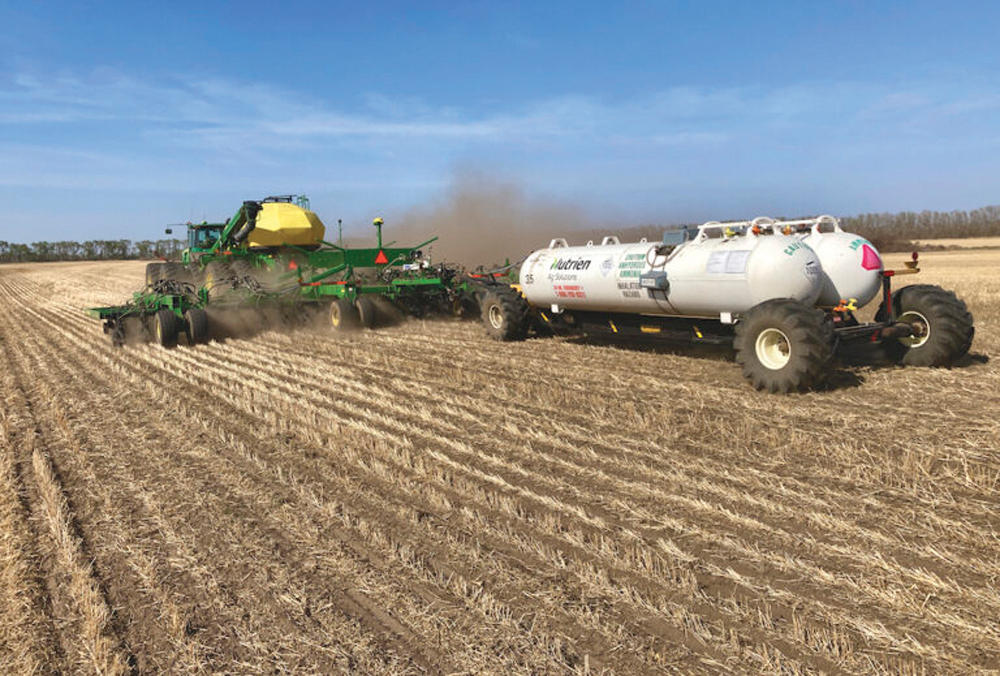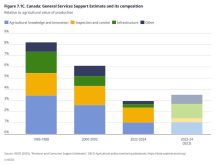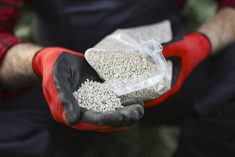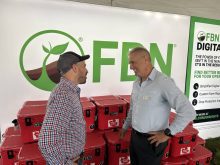Time is running out for producers hoping to pitch in on Ottawa’s plan to cut greenhouse gas emissions from fertilizer use by 30 per cent.
But the June 3 deadline for comments is unfair given seeding is just getting underway, say Alberta’s wheat and barley commissions.
“Farmers tend to do seeding right now,” said Shannon Sereda, senior manager of government relations and policy with Alberta Wheat and Alberta Barley.
Read Also

Land agreement inked for Cereals Canada GATE facility
James Richardson & Sons, Limited will provide land for the Global Agriculture Technology Exchange (GATE) building in Winnipeg, according to memorandum of understanding with Cereals Canada
“Given the impact this could potentially have on farmers, it does seem aggressive, the timelines, especially considering it’s the busiest time of year.”
The consultations are being held in response to a discussion paper the federal government put out earlier this year that said agriculture accounts for 10 per cent of the country’s greenhouse gas emissions (73 million tonnes of carbon dioxide equivalent annually). The paper said fertilizer accounts for about one-sixth of that amount and set a target of reducing them by 30 per cent over the next eight years.
The commissions have asked for more time to work with other industry associations across the country to understand the paper and its implications for farmers, said Sereda.
While the discussion paper acknowledges producers have stabilized greenhouse gas emissions over the last two decades — a feat they accomplished while doubling the value of production — it raises a lot of questions on how a 30 per cent cut is supposed to be achieved by 2030, she said.
“One of our concerns is how they’re setting the baseline and how they’re acknowledging past practices,” said Sereda. “I’m not sure that they’re coming to the table with the evidence to support the ability for what exists for practices and technology to actually achieve those goals within the time frame that they’re suggesting.”
For example, 4R nutrient stewardship features prominently in the discussion document as a major avenue for reducing emissions, especially for nitrogen use.
But it is by no means a groundbreaking approach — but rather a low-hanging fruit that many farmers have already picked, she said.
“They’ve kind of done a lot to reduce their use of fertilizer because it’s a major cost on farms,” said Sereda, adding farmers have been using 4R principles for decades.
Indeed, a recent Fertilizer Canada survey found that, while only 8.4 per cent of Alberta producers had a formal 4R plan in place, 51 per cent said they were employing those practices (that is, using the right rate of the right fertilizer at the right time in the right place).
“So now you’re telling us that we have to adhere to these aggressive targets and they’re not really actually setting any road map or they’re not really saying how they think that, that can be achieved or providing the evidence that it is achievable within that time frame,” said Sereda.
The federal government said it will not force farmers to reduce fertilizer use or impose a European model of fertilizer rate caps. (A mandatory 30 per cent fertilizer reduction would cost farmers over $48 billion in lost revenue over an eight-year period, according to a report commissioned by Fertilizer Canada.)
Still, farmers are concerned about what regulations may arise if current recommendations aren’t enough to hit the mark.
“They’re still voluntary targets that are being proposed by Canada,” said Sereda. “Now, what happens when you don’t meet voluntary targets is that sometimes that can set into effect a more regulatory position, and that’s what we want to try to avoid.”















